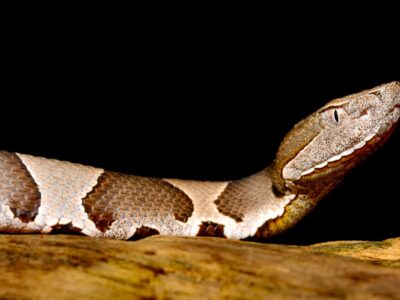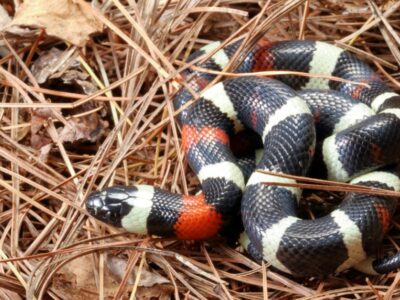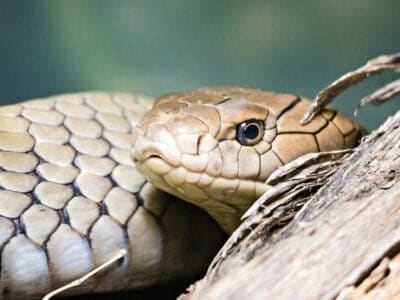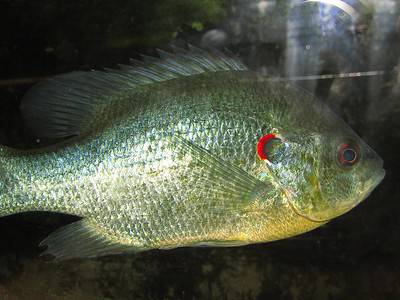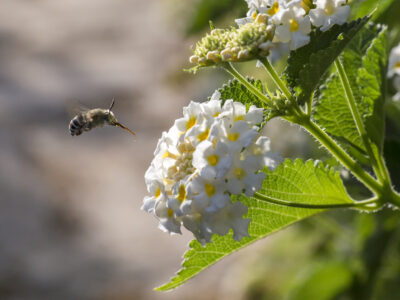With its variety of climates and biomes moderated by its coast along the Atlantic Ocean to the Appalachian Mountains, North Carolina is the perfect land for a variety of mammals, birds, reptiles, amphibians, insects, ticks, fish, predators, herbivores, and others. Read on to learn more about North Carolina’s amazing wildlife.
The Official Animal of North Carolina
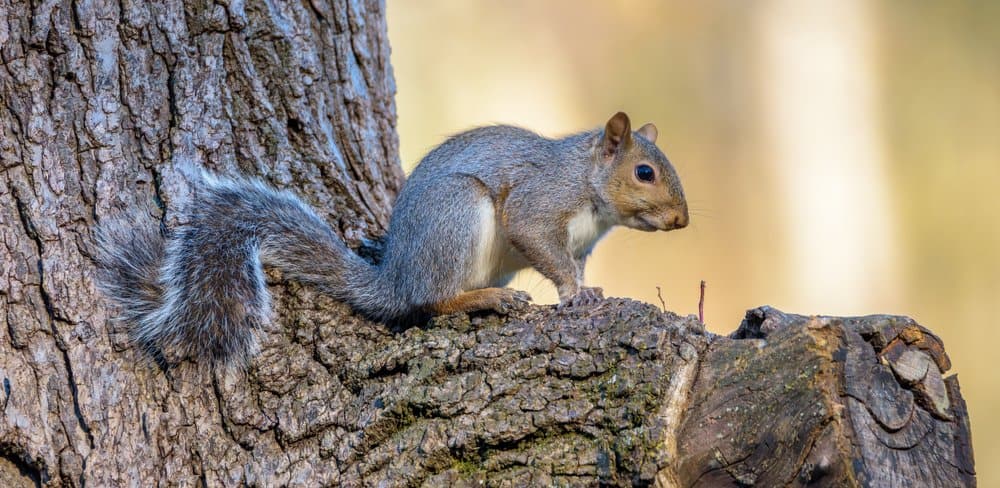
The gray squirrel is North Carolina’s state mammal
©Sterling E Thompson/Shutterstock.com
The official state mammal of North Carolina is the gray squirrel, one of the many species of rodents found in the state. The state bird is the northern cardinal, the state freshwater fish is the Southern Appalachian brook trout and the state saltwater fish is the channel bass. The state frog is the pine barrens tree frog, the state salamander is the marbled salamander, and the state reptile is the eastern box turtle. The state insect is the honey bee, and the state marsupial is the Virginia opossum, the only marsupial in North America. North Carolina’s state shell is the Scotch bonnet, which is a type of marine snail. The state also has domesticated or feral animals as symbols. They are the Plott hound and the colonial Spanish mustang, one of the rarest of the wild horses.
The Largest Animal in North Carolina
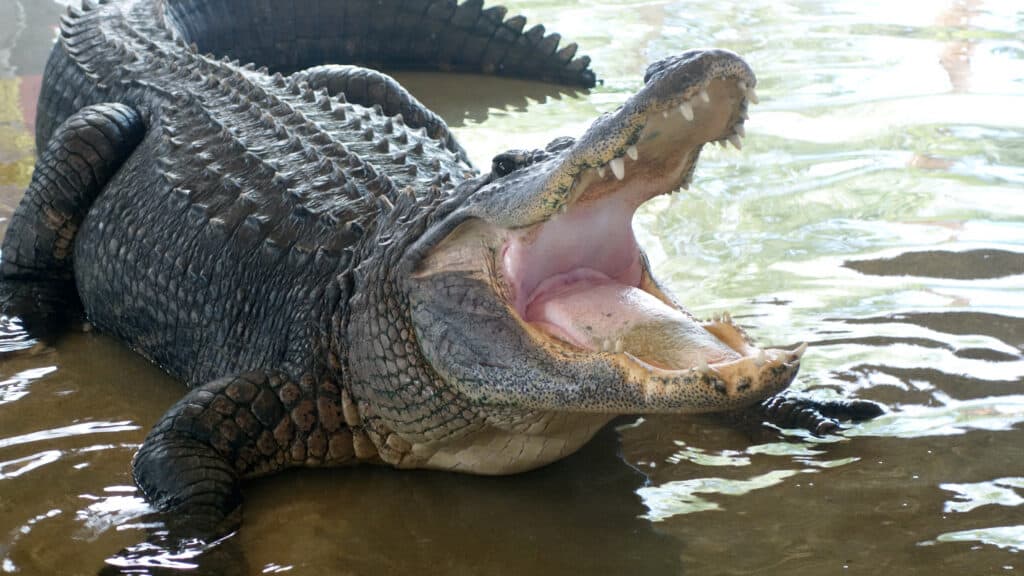
About 1,000 alligators live in North Carolina which is their northern limit
©Ernie Hounshell/Shutterstock.com
The title of largest animal in the Tar Heel State goes to the American Alligator. About 1,000 of these reptiles call the state which is their northernmost limit home. Here where the weather is cooler compared to warmer southern climes, they experience a slower growth rate and are capable of reaching 12 feet and 550 lbs.
They tend to prefer areas which have sparse human populations and as a result are drawn to army bases and parks. However, these reptiles can also be found in Cumberland, Currituck, Dare, Hyde, Robeson, and Tyrell counties. The largest populations of the state’s alligators can be found in its southernmost counties.
The Rarest Animal in North Carolina
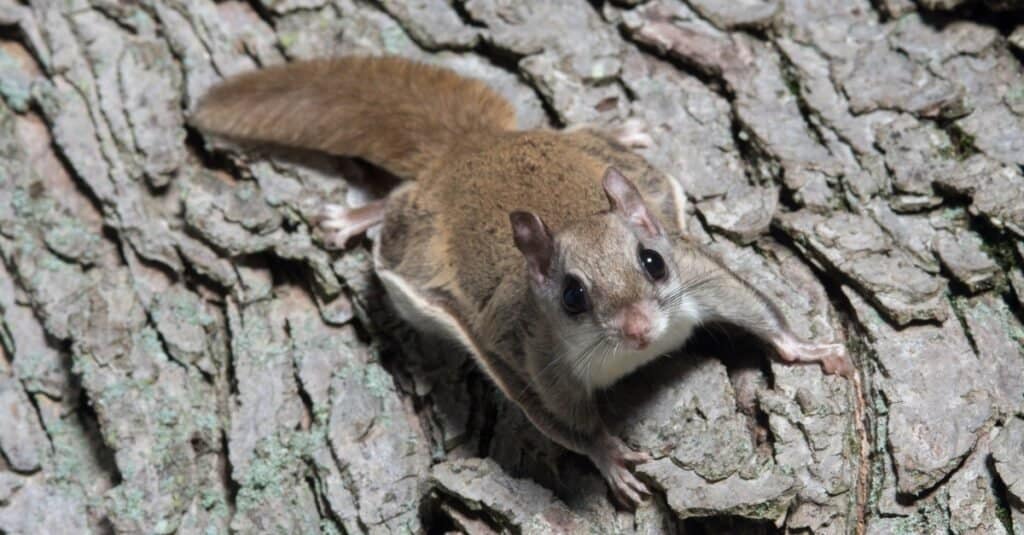
Unlike their southern cousins which are considered pests, Carolina Northern Flying Squirrels live in the Southern Appalachian mountains
©iStock.com/EEI_Tony
The Tar Heel State is home to the endangered Carolina Northern Flying Squirrel (Glaucomys sabrinus coloratus). These rodents which have mastered the art of gliding through the air, rely on their patagium, i.e., the skin between their front and hind limbs on either side, to defy gravity. These flying squirrels live in the Southern Appalachian Mountains where they inhabit wet forests.
They are larger than their southern cousins which are considered to be pests and which are not averse to settling down in homes within the state. And since they enjoy each other’s company, they tend to show up with their relatives and set to gnawing structures and wiring, while depositing their dropping indiscriminately.
Where To Find The Top Wild Animals in North Carolina
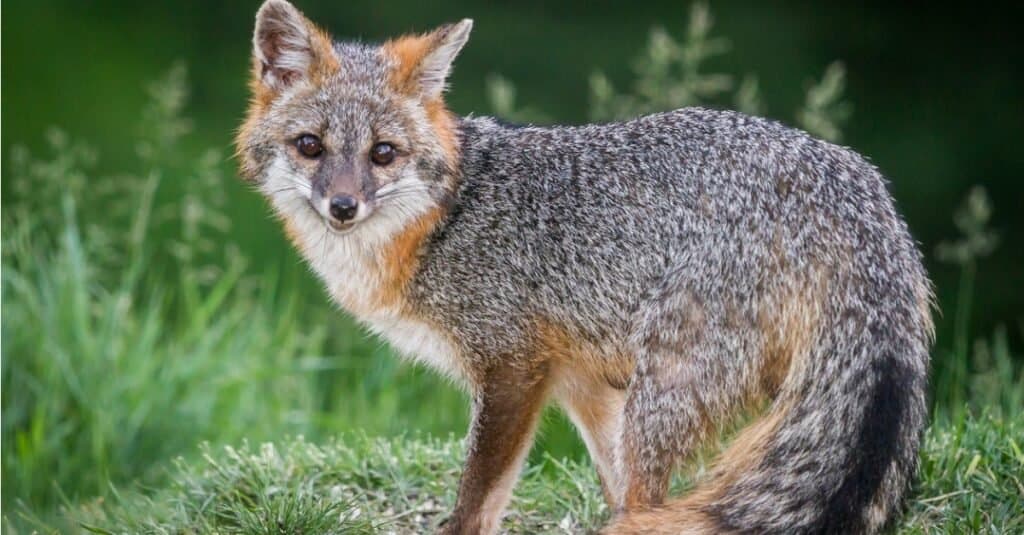
North Carolina’s fauna such as foxes are not above inviting themselves to residents’ backyards or farmlands
©iStock.com/johnpane
Many of North Carolina’s top creatures are often visitors to its farms and backyards, including foxes, opossums, raccoons, rodents and of course birds, who are attracted to backyard feeders and birdbaths. White-tail deer are very common.
North Carolina’s wildlife can also be seen in its 14 national and 34 state parks and other wildlife areas. These include the famous Appalachian National Scenic Trail, the Great Smoky Mountain National Park and the Uwharrie, Croatan and Nantahala National Forests. At the Cape Lookout National Seashore, visitors can get glimpses of sharks, seabirds such as common terns and laughing gulls, wild Banker horses and different species of crab.
Mammals
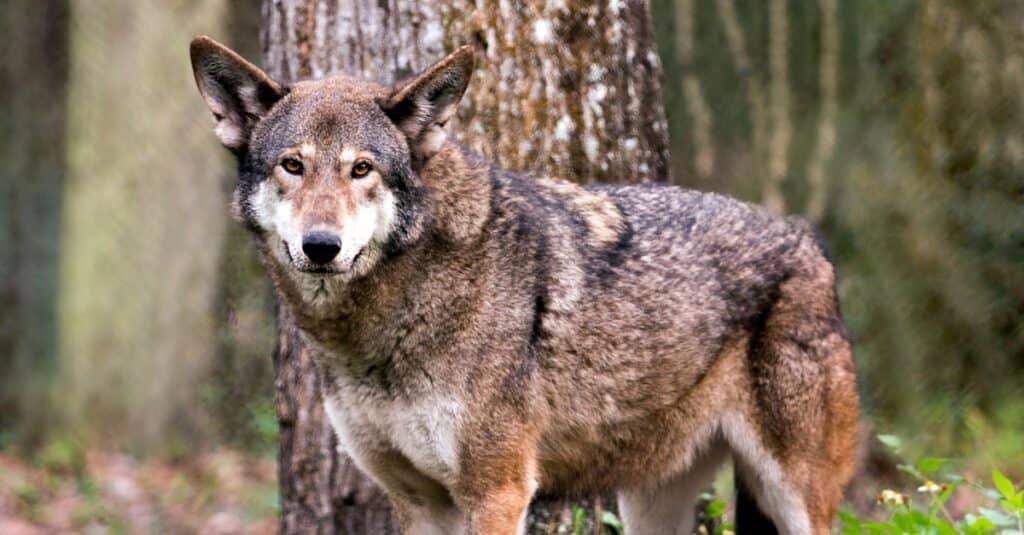
Although the red wolf has been reintroduced to the state, it is currently endangered
©Rejean Bedard/Shutterstock.com
The Banker horse gets its name because it is found on the state’s Outer Banks. Like the colonial Spanish horse, it’s descended from horses brought over by the conquistadors and are not native to the area. The horses can be a bit destructive to native plants and nesting sites but aren’t removed because of their historical importance.
Along with white-tail deer, large mammals include elk, which have been reintroduced into the state. Most of North Carolina’s native predators have been extirpated, but predators that remain include the American black bear, the gray and the red fox, the bobcat, and the coyote. The red wolf has also been reintroduced, even though it is endangered.
Smaller predators are the striped and eastern spotted skunk, the least and long-tailed weasel and the American mink, which lives near bodies of water and preys on aquatic life.
Bats, largely nocturnal, are the only mammals capable of real flight. North Carolina species include the Indiana bat, the gray bat, the Seminole bat and the hoary bat. Rodents are abundant, including the golden mouse, the cotton mouse, squirrels, chipmunks, lemmings and voles. Species of lagomorphs include the eastern cottontail and the marsh rabbit. North Carolina is also home to fossorial moles and their cousins the shrews. The nine-banded armadillo has also made its way to North Carolina. This animal’s strange reproductive strategy results in it giving birth to identical quadruplets every time.
Besides the land animals, marine mammals include pilot whales, dolphins and porpoises. The humpback whale is the most commonly seen whale off the coast. Other whales that have been observed are sperm whales and the North Atlantic right whale, which is one of the rarest of the baleen whales. Killer whales have also been seen, and harbor seals are being spotted more and more.
Birds
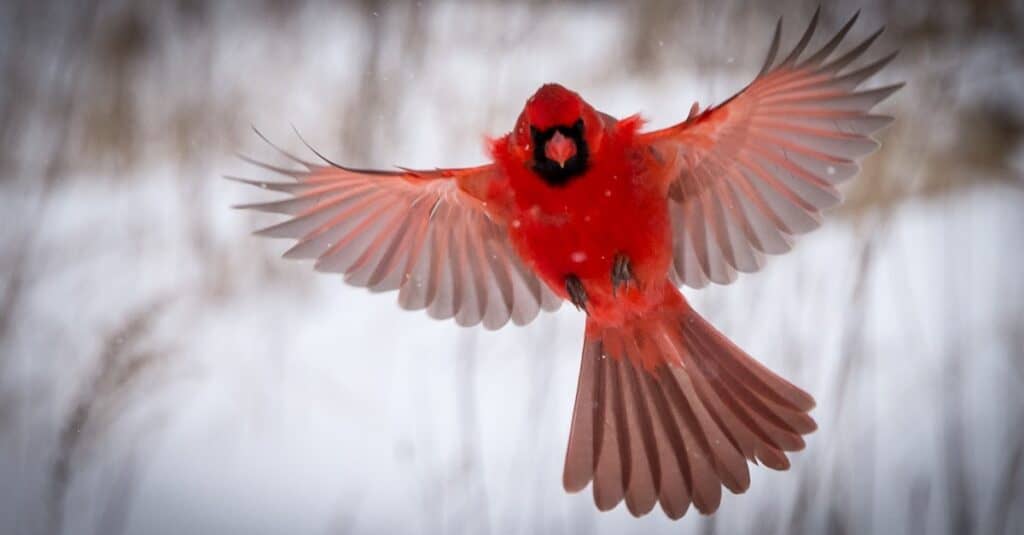
The cardinal is the state bird of North Carolina
©iStock.com/Lynnae_Lowe
From the mountains to the shore, birds are found in all parts of North Carolina. The state bird is the cardinal, which can be told instantly by the bird’s crest and the male’s bright red plumage that resemble the robes of a Catholic cardinal. The only other North Carolina birds that have as much red in their plumage are the scarlet and summer tanagers.
Other birds that either visit or live year-round in North Carolina are shore and seabirds such as sanderlings, gulls and storm petrels. Inland there are waterfowl such as swans, geese, ducks, egrets, spoonbills and ibises. The anhinga can sometimes be seen perching with its wings outstretched on a branch over a body of water. Anhingas dive into the water for their prey, but since their feathers aren’t waterproof like those of ducks and geese, they have to open their wings to dry them out.
North Carolina also has birds of prey such as hawks, falcons, eagles, ospreys, vultures and owls, who are mostly nocturnal. Woodpeckers live in North Carolina’s forests, and their number may include one of the rarest, the ivory-billed woodpecker. Some people even believe that this woodpecker is extinct.
Other North Carolina songbirds are vireos, phoebes, flycatchers, chickadees, titmice, crows and blue jays, ravens, swallows and swifts, and the cedar waxwing, which sometimes gathers in great flocks in city trees. There are wrens, catbirds, thrashers and the northern mockingbird, starlings, pigeons and sparrows. The Louisiana waterthrush, which is not a thrush but a warbler, shows up in North Carolina, as does the American robin, which is a thrush.
Fish
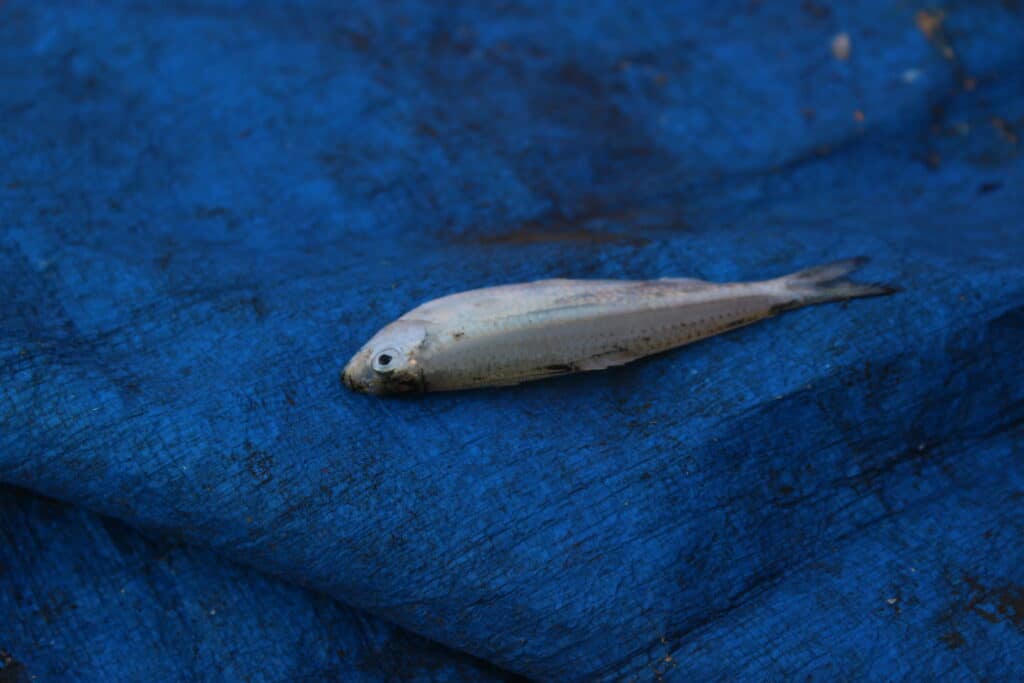
North Carolina contains an abundance of saltwater and freshwater fish including bluefin tuna and shad
©Radhe Modi/Shutterstock.com
Because it borders the Atlantic Ocean and is full of lakes, rivers and streams, the state has a wealth of freshwater and saltwater fish. Freshwater fish include pumpkinseed, different species of bass including the Roanoke and largemouth bass, perch and pickerel, shad, carp, trout, walleyes and a fish called the Cape Fear shiner. This 2 inch long fish is only found in the upper basin of the Cape Fear River and is endangered.
Saltwater fish include several species of shark. Other fish are the dolphinfish (aka mahi mahi), cobias, sea mullets, bonitos and searobins, spots, mackerels, bluefin, skipjack and yellowfin tuna, types of billfish, pompano, menhadens and stingrays. Others are the ugly toad, scamps, gags and a strange looking fish called the pigfish.
Reptiles and Amphibians

North Carolina is home to the eastern copperhead as well as several other snake species
©DnDavis/Shutterstock.com
The relatively mild climate of North Carolina allows many species of reptiles and amphibians to live there comfortably. The largest of these animals is the American alligator which is found in the bodies of fresh water in the southern part of the state. It is indeed rather common in this area and can even be found sunning on the beach. Males can weigh over 500 pounds and grow to 13 feet in length. Females are a little smaller.
Turtles of North Carolina include the eastern chicken turtle, which gets its name because it tastes like chicken. There’s the eastern musk turtle, the red-eared slider, the snapping turtle, the Cumberland slider and the eastern box turtle, which is the state turtle. The ocean is home to some of the rarest of the sea turtles, including the Atlantic hawksbill sea turtle and the Kemp’s ridley sea turtle, both of which are critically endangered.
North Carolina is full of snakes, though most snakes try to be elusive. There are brown snakes, water snakes, hog-nosed snakes, milksnakes and swampsnakes, ratsnakes, cornsnakes and coachwhips and black racers. There are ribbon snakes, gartersnakes, crownsnakes and earthsnakes. Some snakes are venomous. They include the eastern copperhead, the northern cottonmouth and the timber rattlesnake. Other dangerous snakes are the eastern diamond-backed rattlesnake and the Harlequin coral snake.
Lizards are also common in North Carolina. Among them are the Mediterranean gecko, which was introduced but is right at home in the state. Others are the green anole, which can change color and the eastern fence lizard. There are also species of skinks and glass lizards, which are legless and look like snakes. They get their name not because they’re transparent but because it is very easy to snap off their tail.
The Piedmont, or the feet of the North Carolina mountains are full of swamps and marshes, which is perfect habitat for amphibians whose skin must be kept moist. Among them are the mudpuppy, the eastern lesser siren and a strange eel-like salamander called the two-toed amphiuma. There’s also the red-spotted and broken striped newt, the Junaluska salamander, the Santeetlah dusky salamander and the Yonahlossee salamander.
Some frogs and toads are the eastern American toad, the little grass frog, the barking tree frog, the American bullfrog and the oak toad, the smallest toad in North America at between three quarters to an inch to a little over an inch long.
Insects and Other Arthropods
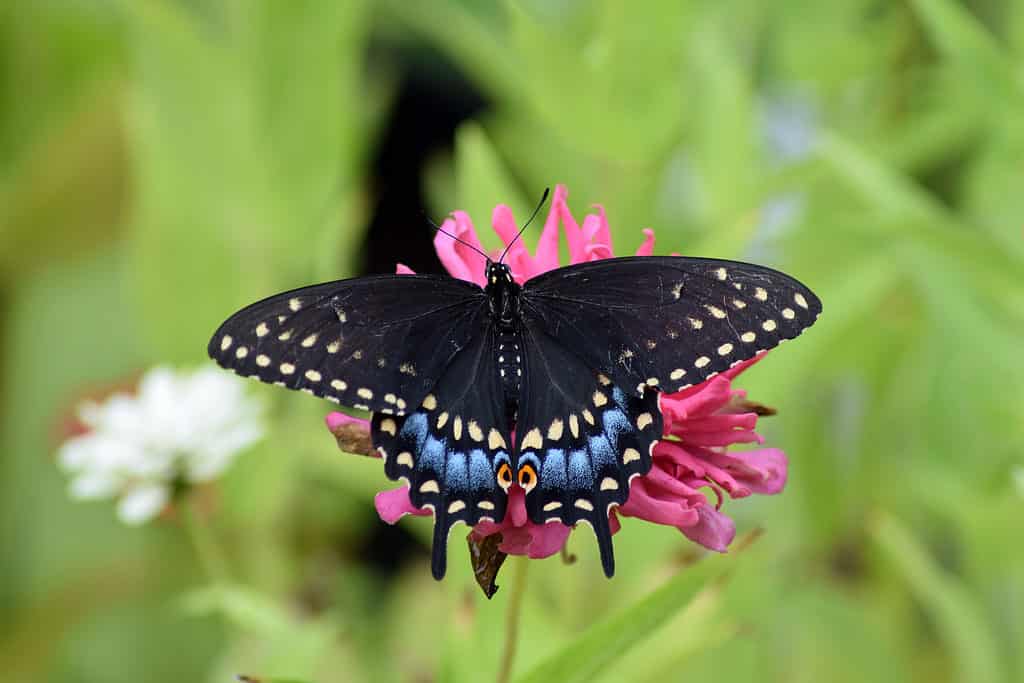
The black swallowtail butterfly is one of North Carolina’s many insect species
©Josef Stemeseder/Shutterstock.com
There are well over 10000 species of insects and other arthropods in North Carolina. Spiders include the black widow, the ant mimic spider, crab spiders, orb weavers and jumping spiders. You can read about the largest spider in North Carolina. There are also colorful dragonflies, craneflies and damselflies, ladybugs and assassin bugs, horseflies and weevils, fireflies and blister beetles. Butterflies and moths are plentiful and include the bluish spring moth and the black swallowtail butterfly.
There is a wealth of ants, bees, hornets and wasps including the cow killer, which gets its name because its sting is so ferocious it should be enough to kill a cow. Other insects are grasshoppers, kudzu bugs, planthoppers, crickets, katydids, roaches, flies, stinkbugs, mosquitoes and cockroaches. Joining them are other arthropods such as the greenhouse millipede, the house centipede, pseudoscorpions, the southern devil scorpion, daddy long legs and the sow bug. Crayfish are found in North Carolina streams and creeks and help to keep them clean.
Other invertebrates found around North Carolina’s shores include jellyfish, sea stars, sea urchins, sea anemones and marine mollusks.
Zoos in North Carolina
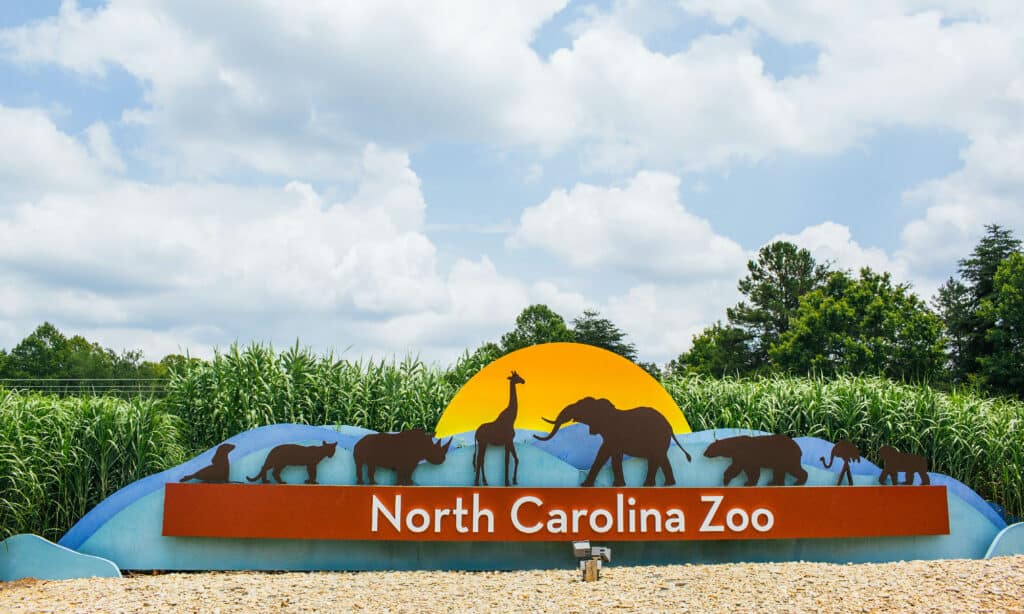
The North Carolina Zoo is home to 1,800 animal species
©ZikG/Shutterstock.com
People who’d rather see more exotic animals at North Carolina zoos can visit the North Carolina Zoo in Ashboro, the Greensboro Science Center, the Western North Carolina Nature Center in Asheville, the Tregembo Animal Park in Myrtle Grove and the Mill Mountain Zoo in Roanoke.
North Carolina is also home to numerous wildlife refuges. These include the Alligator River National Wildlife Refuge in its eastern part by the Atlantic Coast, and the Pea Island National Wildlife Refuge which provides nesting areas for shorebirds and even rookeries, too. Avian species which can be seen there include ducks, geese, piping plovers, red-cockaded woodpeckers, roseate terns, and swans.
Wild Animals in North Carolina
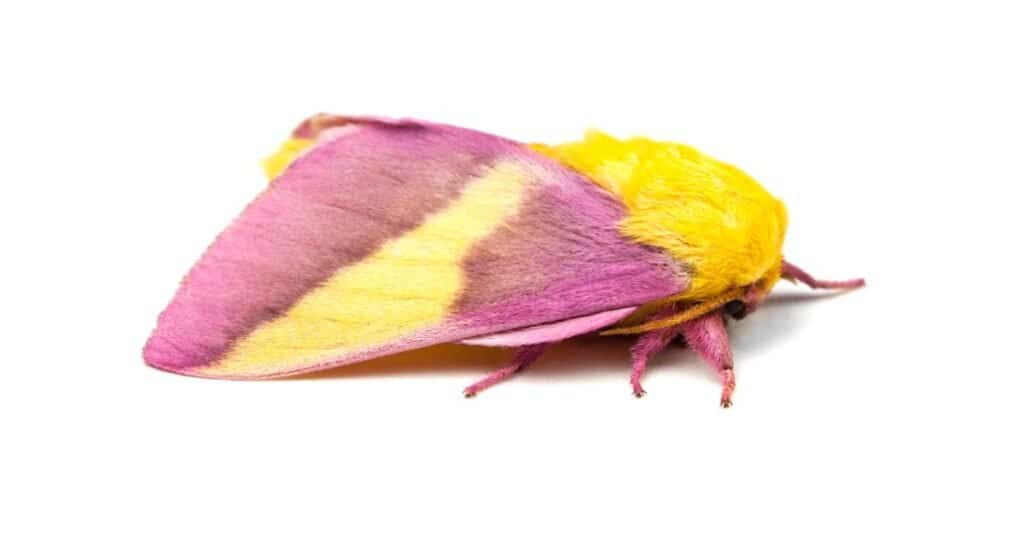
The rosy maple moth is known for its pink and yellow wings which resemble maple tree samaras
©Melinda Fawver/Shutterstock.com
Other wild animals found in North Carolina are the peacock fly, which is a type of fruit fly given its name for its bright coloration. These tiny flies are pests on fruits and other crops, but some are used to control weeds. The rosy maple moth is a beautiful pink and pale yellow moth whose wings resemble maple tree samaras.
The northern flying squirrel is considered endangered in North Carolina but is considered of least concern overall. It is a nocturnal rodent that eats plant material and glides from one tree to the other using a membrane attached to its legs called a patagium.
The wahoo is a fast, torpedo-shaped fish found in the ocean. It is prized as a game fish, and its flesh is good eating.
The northern short-tailed shrew is one of the few venomous mammals. Its venom is surprisingly similar to that of the Mexican beaded lizard.
The Most Dangerous Animals In North Carolina Today
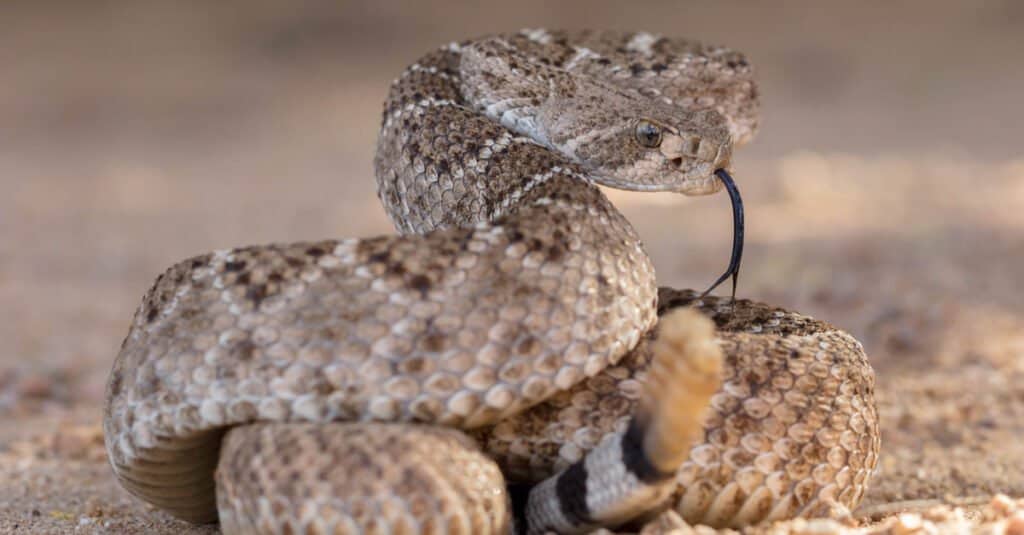
The eastern diamondback rattlesnake has the longest fangs of any rattlesnake and a potent venom
©Alexander Wong/Shutterstock.com
Here are some animals to be respectful of in North Carolina:
- Eastern diamondback rattlesnake. This heavy-bodied snake can grow to over 7 feet in length and weigh over 10 pounds, and its fangs are the longest of any rattlesnake. Though it’s not terribly aggressive, its venom is powerful, and 10 to 20 percent of people who are envenomated die if they are not treated.
- Sharks. The hammerhead, bull and tiger sharks swim off the coast of North Carolina and have been known to attack humans. Since the great white shark swims all over the world, it is also encountered in the waters off of North Carolina.
- Alligators. Though fatal attacks are rare, any bite from a reptile capable of 2961 pounds of force is very serious and must be treated immediately.
- Mosquitoes. In her quest to find a blood meal for her babies, the female mosquito spreads a variety of diseases in North Carolina, including the West Nile and Zika viruses.
Endangered Animals In North Carolina
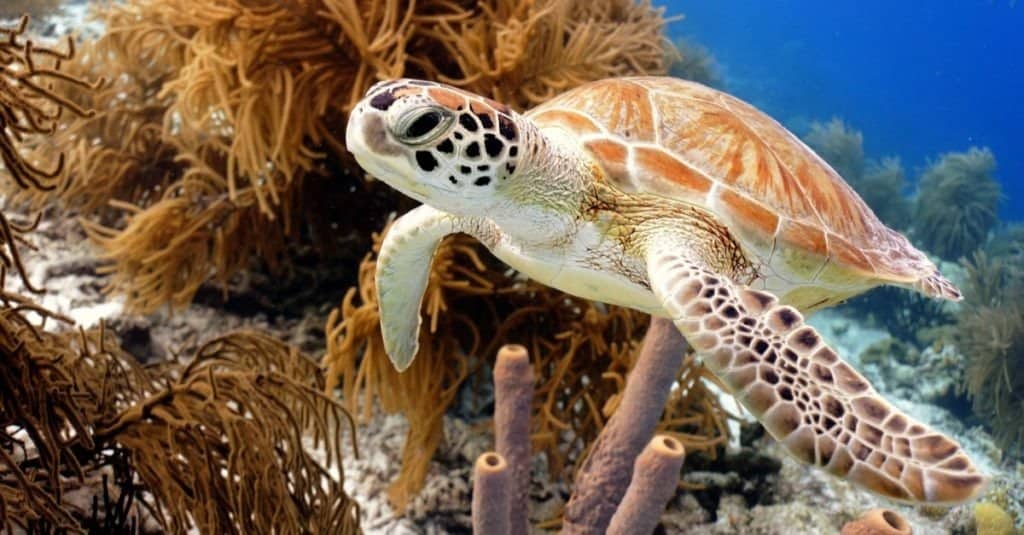
Green sea turtles are an endangered species in North Carolina and are affected by habitat disruption
©Isabelle Kuehn/Shutterstock.com
- Colonial Spanish mustang. This feral horse, introduced by the Spanish Conquistadors hundred of years ago, is critically endangered.
- Eastern small-footed myotis. This little bat is a type of vesper bat, which means it comes out in the evening. It’s considered endangered and eats mostly moths, as the hard shells of beetles are difficult for it to handle.
- Sea Turtles. Nearly every sea turtle that swims off the coast of North Carolina, including Kemp’s ridley sea turtle, the Atlantic hawksbill, the green, the loggerhead or the leatherback is endangered due to habitat disruption, pollution and getting entangled in ropes and traps meant for other marine life. Even artificial light can disorient hatchlings as they attempt to make their way from the land to the sea.
- Neuse River waterdog. This is a type of mudpuppy that’s found only in North Carolina. It’s classified as threatened due to pollution of its habitat.
Rivers in North Carolina
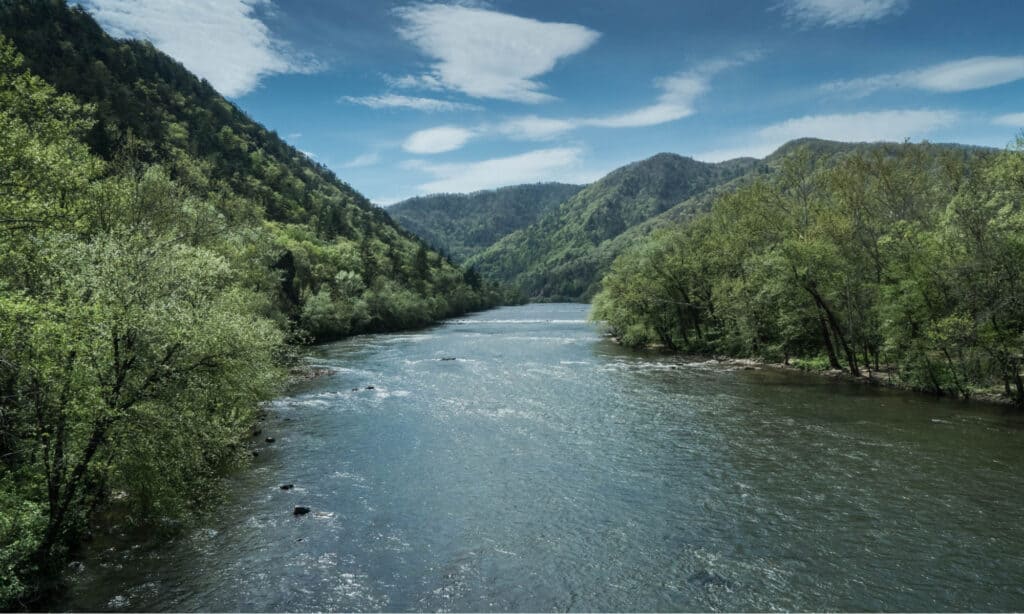
North Carolina’s rivers support an impressive variety of wildlife
©Dominick Aprile/Shutterstock.com
There are several notable rivers in North Carolina that are home to a vast diversity of wildlife. The New River flows across West Virginia, Virginia, and North Carolina. Its wetlands and habitats are home to 65 species of mammals, 40 species of reptiles, and a number of birds.
There is also the Roanoke River which contains the greatest quantities of water compared to any other river in the state. It runs through the Roanoke River National Wildlife Refuge which supports warblers (cerulean, Kentucky, and Swainson’s) and mallards, wood ducks, and widgeons. Other key rivers in North Carolina include the Tar River, Neuse River, and Pee Dee River.
Native Plants in North Carolina

The Christmas fern is one of North Carolina’s many native plants
©DragonWen/Shutterstock.com
North Carolina is home to a wide variety of plants, with over 30 orders of plants present in the state. Some native plants in North Carolina include buttonbush, Carolina rose, cranberry, low bush blueberry, sundrops, swamp rose, and Christmas fern, among others.
Among these plants, many trees in North Carolina play a vital role in the environment, providing habitat for wildlife and offering numerous benefits to communities. Some native trees in North Carolina include American holly, American plum, black cherry, eastern hemlock, eastern redbud, Fraser fir, and sourwood.
North Carolinian Animals
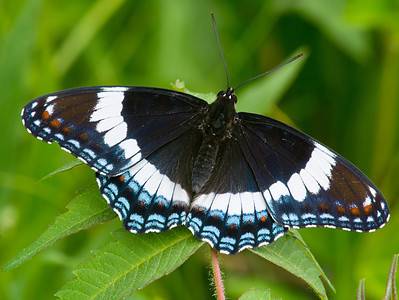
Admiral Butterfly
Stunningly beautiful wings
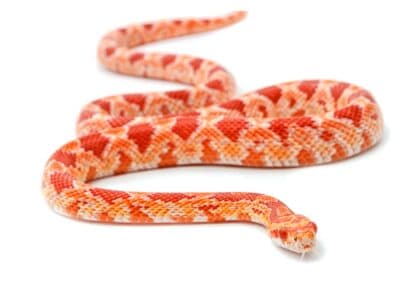
Albino (Amelanistic) Corn Snake
Albino corn snakes make great beginner snakes.
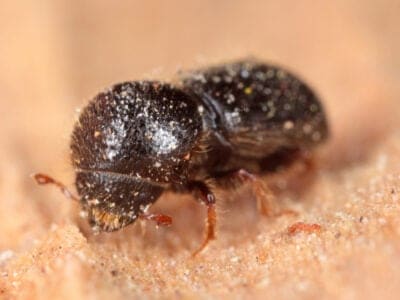
Ambrosia Beetle
The ambrosia beetle forms a symbiotic relationship with the ambrosia fungi
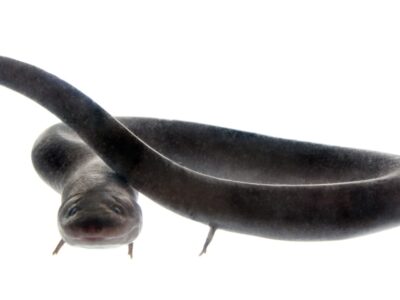
American Eel
Don't eat raw eel! Their blood is poisonous to humans when consumed raw.

Armyworm
They are so named because they "march" in armies of worms from one crop to another in search of food
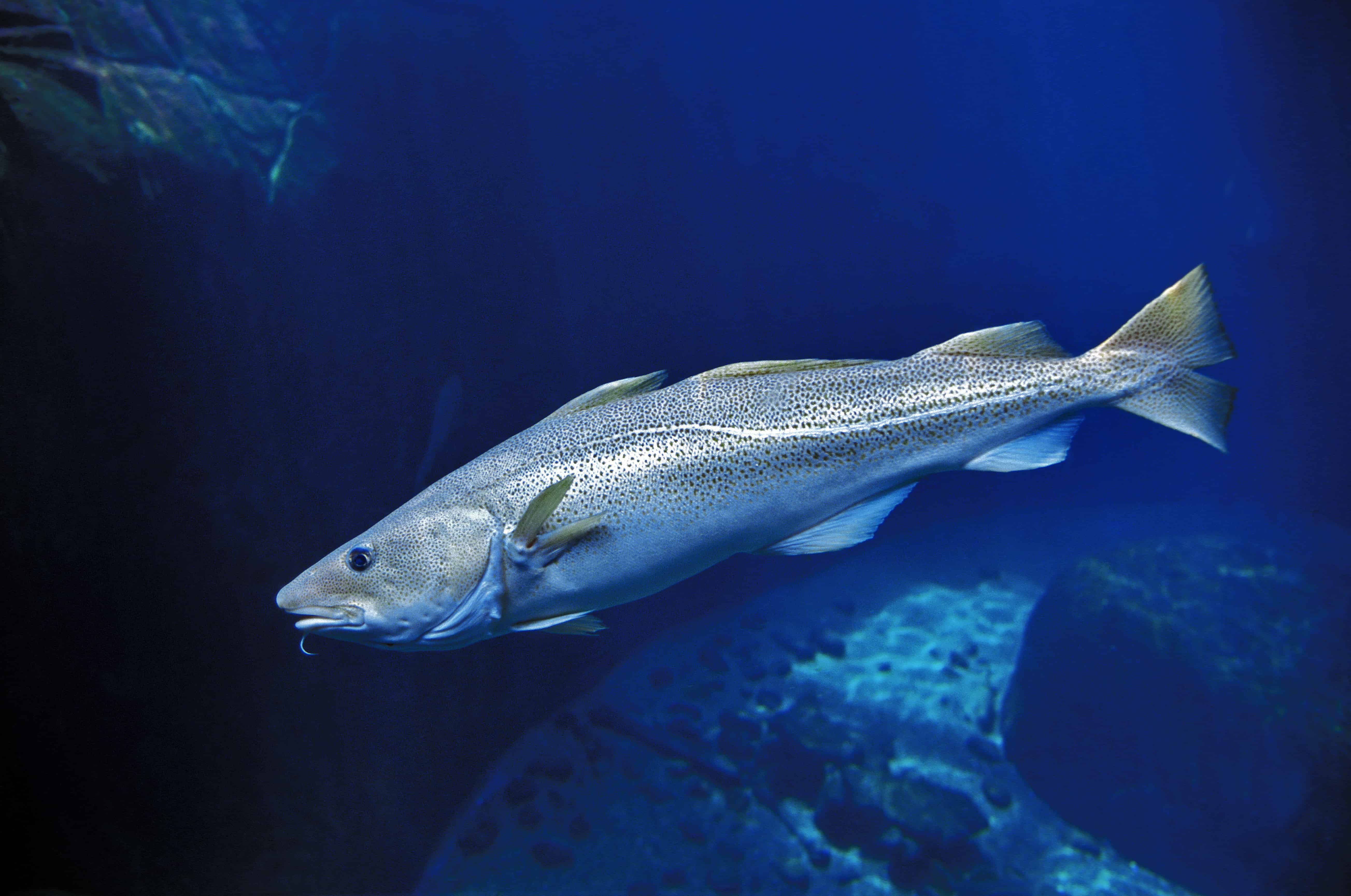
Atlantic Cod
One of the most popular food fishes in the world

Bagworm Moth Caterpillar
They continually enlarge their protective cases
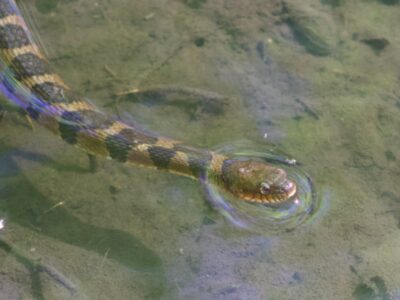
Banded Water Snake
Some water snakes defend themselves violently.

Beewolf wasp
They hunt bees
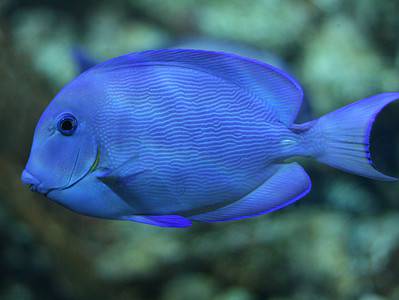
Blue Tang
One of the most colorful members of the genus Acanthurus
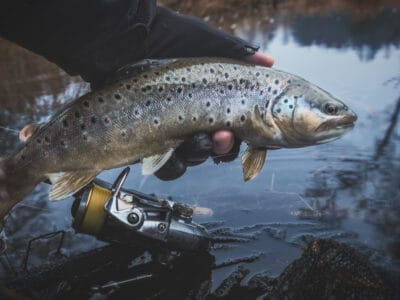
Brook Trout
The Brook Trout is actually part of the salmon family, making it not technically a trout.
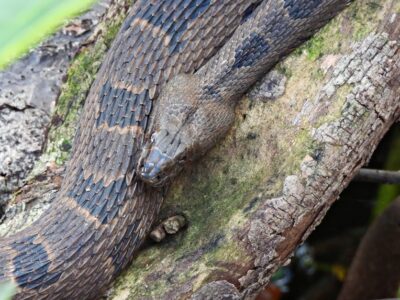
Brown Water Snake
Has more scales than any other water snake on the continent: 27 to 33 rows of dorsal scales!
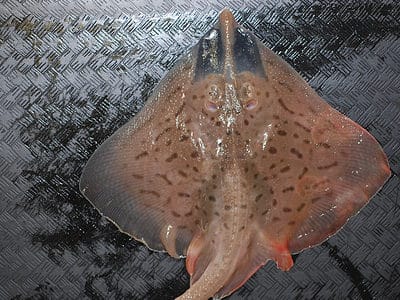
Clearnose Skate
The skate with translucent nose patches
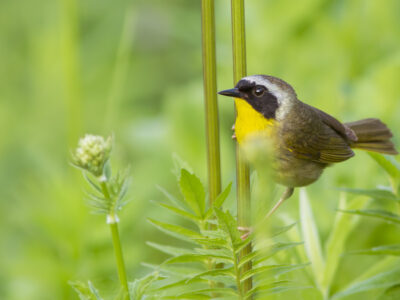
Common Yellowthroat
The Common Yellowthroat stays close to the ground and uses stealth to survive!
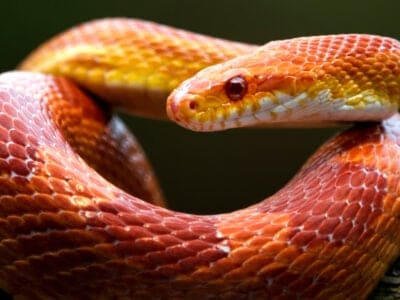
Corn Snake
Corn snakes are partly arboreal and are excellent climbers.
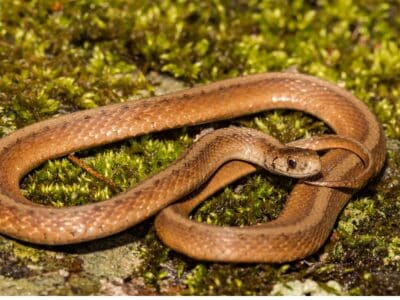
De Kay’s Brown Snake
They have specialized jaws for removing snails from shells.
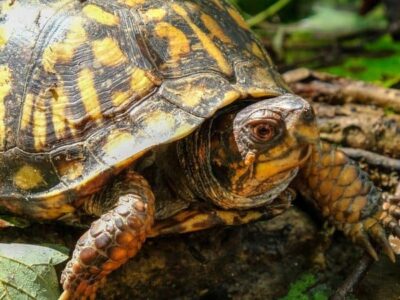
Eastern Box Turtle
When injured or damaged, the shell of the eastern box turtle can regenerate
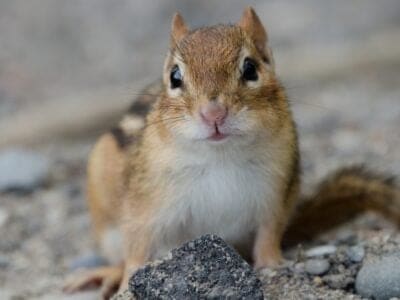
Eastern Chipmunk
The name chipmunk is derived from an Ojibwe word that means “one who descends the trees headfirst.”
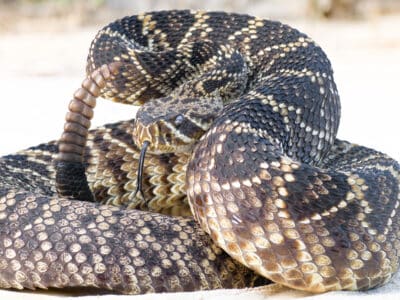
Eastern Diamondback Rattlesnake
This is the biggest venomous snake in North America, with a few that reach 8 feet long.
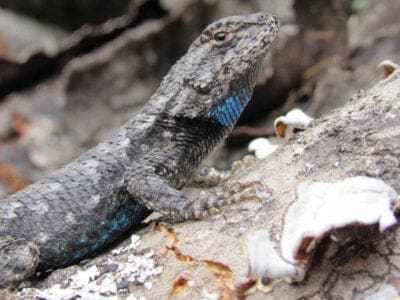
Eastern Fence Lizard
Females are usually larger than males.
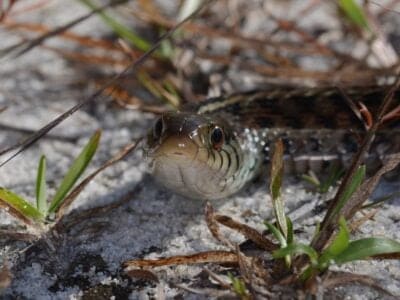
Eastern Glass Lizard
When the glass lizard loses its tail it can grow another one. But the new tail lacks the markings of the old one and is usually shorter.
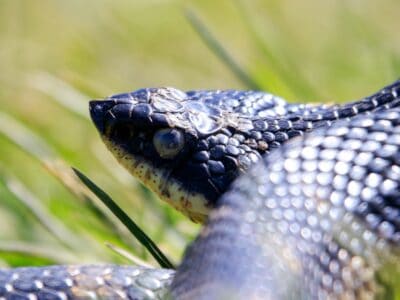
Eastern Hognose Snake
Eastern hognose snakes are venomous, but only to frogs and toads.
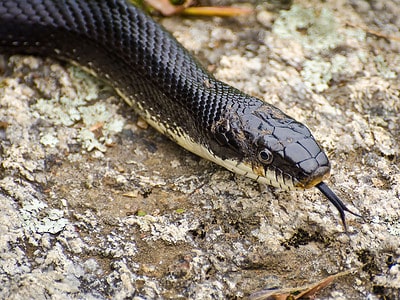
Eastern Rat Snake
Rat snakes are medium-to-large, nonvenomous snakes that kill by constriction.
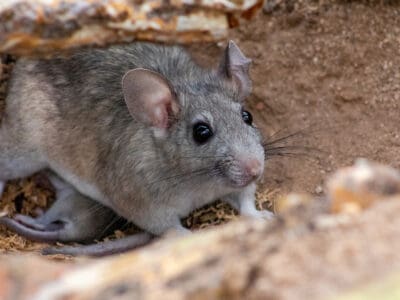
Eastern Woodrat
The eastern woodrat mating ritual involves a potentially deadly fight between the male and female before reproduction begins!

Flea
Adult fleas can jump up to 7 inches in the air
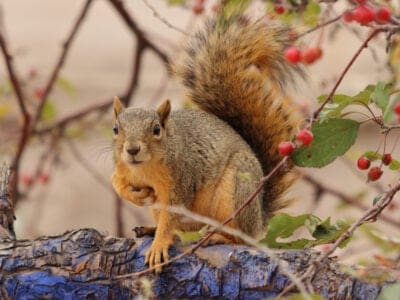
Fox Squirrel
Although it is a tree squirrel, it spends most of its time on the ground.

Green Snake
There are two types of green snakes: smooth green snakes and rough green snakes
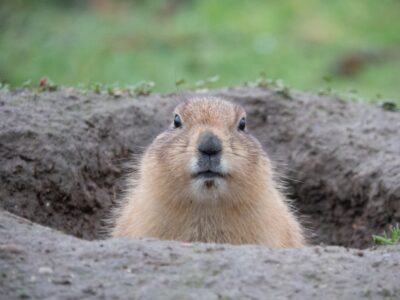
Groundhog (Woodchuck)
They whistle to each other to warn of approaching danger!
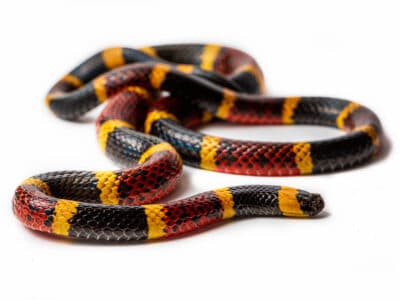
Harlequin Coral Snake
Red touches yellow kills a fellow, red touches black a friend of Jack.
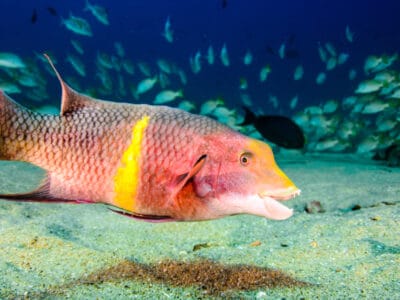
Hogfish
Hogfish can change their sex from female to male
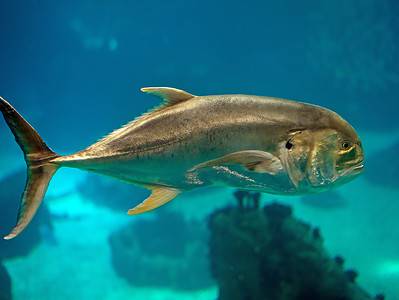
Jack Crevalle
One of the biggest species in the Caranx genus
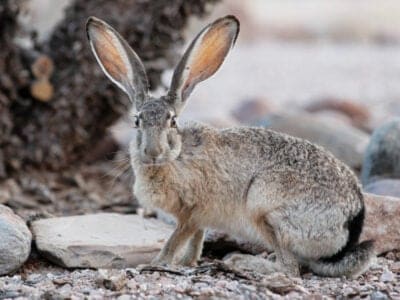
Jackrabbit
They can run as fast as 45 mph.
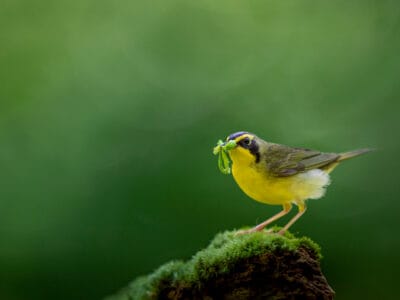
Kentucky Warbler
The Kentucky Warbler appears to wear bright yellow cat-eye glasses!

Kokanee Salmon
A non-anadromous type of sockeye salmon
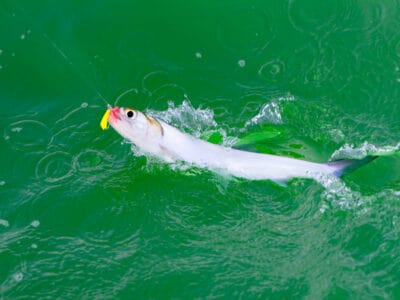
Ladyfish
Ladyfish are aggressive fighter when hooked, making them a favorite of anglers.

Mealybug
They have a symbiotic relationship with ants.

Mockingbird
Mockingbirds are incredible mimics that can learn hundreds of songs!
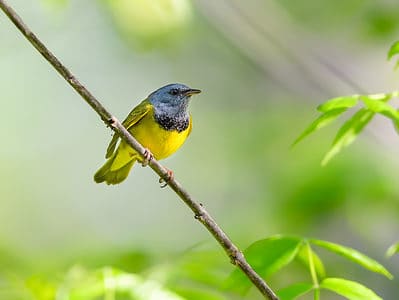
Mourning Warbler
The Mourning Warbler was named for its gray head, which resembles a mourning veil!

Mud Snake
Mud snakes can lay over 100 eggs at a single time!

Nematode
Nematodes range in size from 1/10 of an inch to 28 feet long
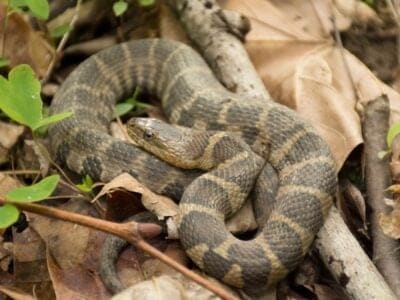
Northern Water Snake
Northern watersnakes’ teeth help them nab fish as they swim by.

Orb Weaver
Females are about four times the size of males

Owl
The owl can rotate its head some 270 degrees

Pine Snake
Pine snakes bluff with the best, trying to scare you away.
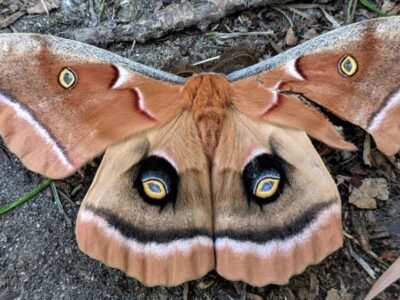
Polyphemus Moth
The Polyphemus moth doesn’t and can't eat, except when it's a caterpillar!
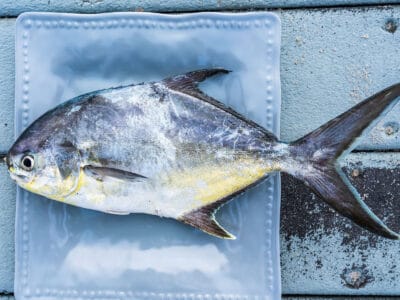
Pompano Fish
They are bottom-feeders
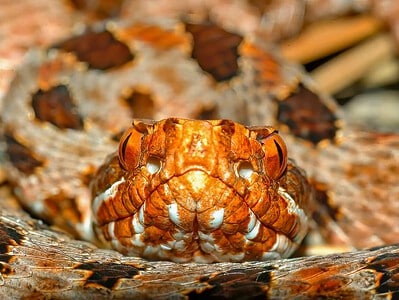
Pygmy Rattlesnake
Pygmy rattlesnakes’ rattle is so small it can only be heard from about three feet away.
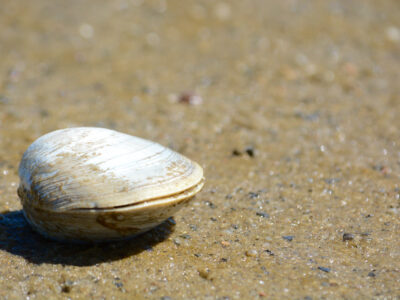
Quahog Clam
Their hinged shell protects their soft body
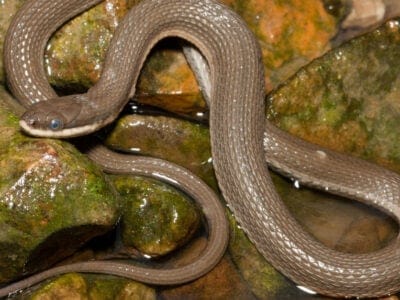
Queen Snake
Queen snakes have armor-like scales on the top of their head
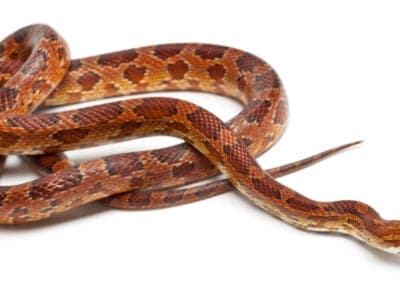
Rat Snakes
Rat snakes are constrictors from the Colubridae family of snakes.
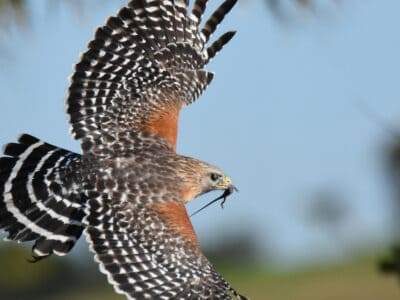
Red-Shouldered Hawk
Red-Shouldered Hawks reuse the same nesting area each year.

Rooster
Will mate with the entire flock!

Rough Earth Snake
It has a pointed snout that is uses to burrow into moist soil.
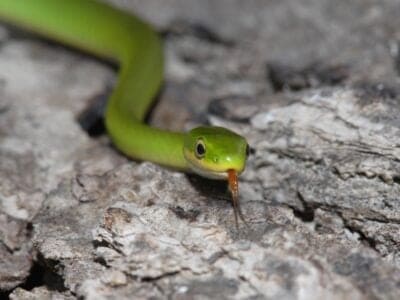
Rough Green Snake
Rough green snakes are great pet snakes because they're low-maintenance.
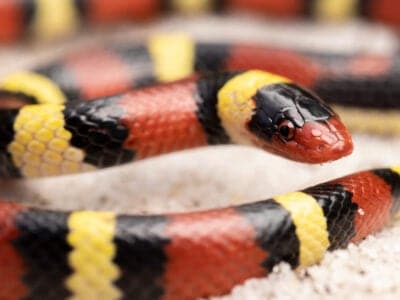
Scarlet Kingsnake
Scarlet kingsnake’s pattern is an example of Batesian mimicry.

Seagull
Some gulls are capable of using tools
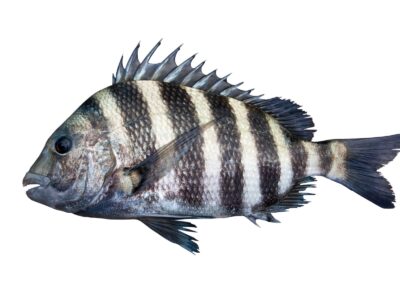
Sheepshead Fish
This fish has teeth that resemble a human's.
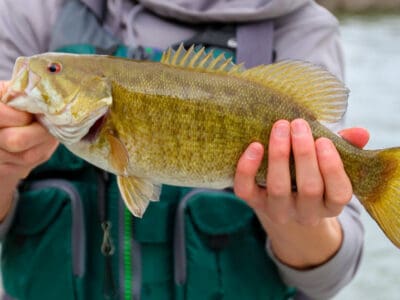
Smallmouth Bass
A fierce fighter!

Smokybrown Cockroach
Has up to 45 eggs per egg case
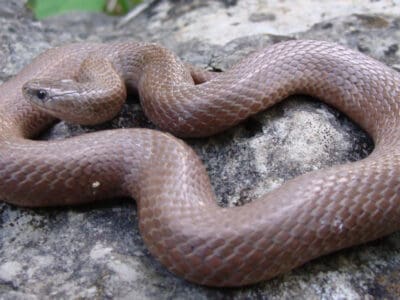
Smooth Earth Snake
Valeria Biddle Blaney (1828-1900) collected the first specimen in Maryland.
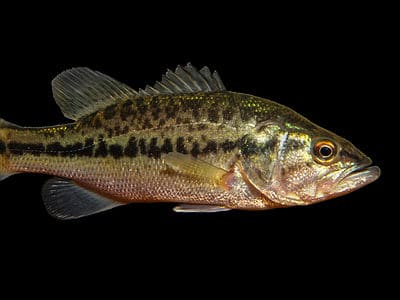
Spotted Bass
Spotted bass tend to congregate in schools unlike other types of bass fish.

Stargazer Fish
Uses an electric shock to stun its prey!
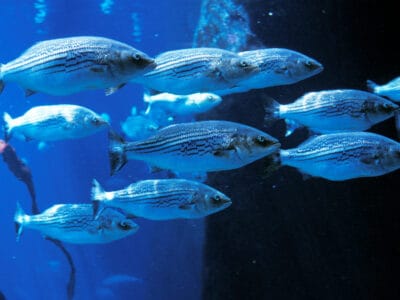
Striped Bass
Pilgrims counted striped bass as an essential part of their diet from the time they arrived in North America.
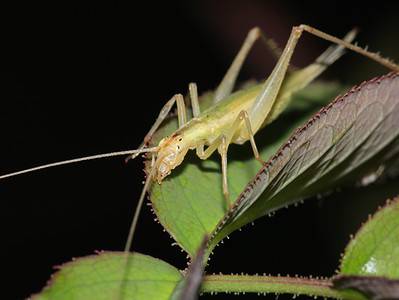
Tree Cricket
They make music with their wings
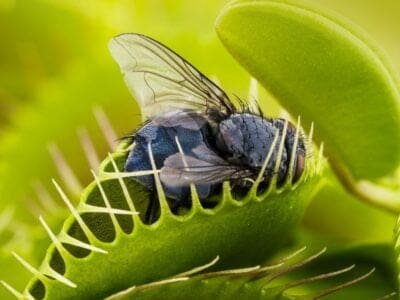
Venus Flytrap
The Venus flytrap is among a group of plants that consumes animals
North Carolinian Animals List
- Admiral Butterfly
- Agkistrodon Contortrix
- Albino (Amelanistic) Corn Snake
- Ambrosia Beetle
- American Eel
- Armyworm
- Atlantic Cod
- Bagworm Moth Caterpillar
- Banded Water Snake
- Beewolf wasp
- Blue Tang
- Brook Trout
- Brown Water Snake
- Clearnose Skate
- Common Yellowthroat
- Corn Snake
- De Kay’s Brown Snake
- Eastern Box Turtle
- Eastern Chipmunk
- Eastern Diamondback Rattlesnake
- Eastern Fence Lizard
- Eastern Glass Lizard
- Eastern Hognose Snake
- Eastern Rat Snake
- Eastern Woodrat
- Flea
- Fox Squirrel
- Green Snake
- Groundhog (Woodchuck)
- Harlequin Coral Snake
- Hogfish
- Jack Crevalle
- Jackrabbit
- Kentucky Warbler
- Kokanee Salmon
- Ladyfish
- Mealybug
- Milk Snake
- Mockingbird
- Mourning Warbler
- Mud Snake
- Nematode
- Northern Water Snake
- Orb Weaver
- Owl
- Pine Snake
- Pine Snake
- Polyphemus Moth
- Pompano Fish
- Pygmy Rattlesnake
- Quahog Clam
- Queen Snake
- Rat Snakes
- Red-Shouldered Hawk
- Redear Sunfish
- Rooster
- Rough Earth Snake
- Rough Green Snake
- Scarlet Kingsnake
- Seagull
- Sheepshead Fish
- Smallmouth Bass
- Smokybrown Cockroach
- Smooth Earth Snake
- Southeastern Blueberry Bee
- Spotted Bass
- Stargazer Fish
- Striped Bass
- Swallowtail Butterfly
- Tree Cricket
- Venus Flytrap
- Yellowish Cuckoo Bumblebee (formerly Fernald’s Cuckoo Bumblebee)
Animals in North Carolina FAQs (Frequently Asked Questions)
Are there any deadly animals in North Carolina?
There are a few deadly animals in North Carolina, and the one to really be wary of is the eastern timber rattlesnake. The venom of this dangerous snake has been known to kill people. Fatal attacks by sharks and alligators are rare but do happen.
What animal is native to North Carolina?
Many animals are native to North Carolina, and there are a few that are only found in the state. Two are the Neuse River waterdog and the Cape Fear shiner.
What waterfalls are in North Carolina?
North Carolina is home to a number of beautiful waterfalls. Some of the most stunning include Dry Falls, Rainbow Falls, and Crabtree Falls.
Are there alligators in North Carolina?
There are alligators in North Carolina, and they are surprisingly common.



